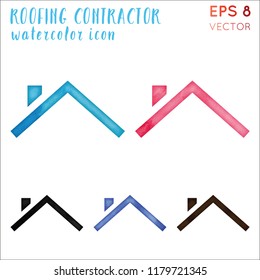Exactly How Climate Impacts Industrial Painting
Exactly How Climate Impacts Industrial Painting
Blog Article
Material Produce By-Thestrup Han
When you're taking care of an industrial paint job, you can not disregard just how weather plays a vital role in your success. Factors like temperature, moisture, and wind can either boost or threaten your initiatives, impacting whatever from application high quality to safety on duty site. You may assume you can paint anytime, but the fact is that specific conditions can cause expensive hold-ups or inadequate surfaces. Recognizing these elements is crucial, but what certain strategies can you carry out to make sure optimum outcomes in the middle of unpredictable weather condition?
Temperature and Paint Application
When it involves business painting, temperature plays a crucial duty in how well the paint adheres and dries out. If you're intending a project, watch on the temperature array recommended by the paint manufacturer. Preferably, you intend to work within that range for optimal outcomes.
When temperatures are too reduced, paint can come to be thick and tougher to use, bring about irregular coverage. You might find yourself struggling with brush strokes or roller marks that just will not disappear.
On the other hand, heats can cause paint to completely dry as well promptly. This can cause issues like splitting or peeling off, as the paint doesn't have sufficient time to bond appropriately to the surface.
If it's too hot, take into consideration scheduling your benefit cooler parts of the day, such as early morning or late afternoon.
Moisture and Complete Top Quality
Humidity significantly influences the surface top quality of business painting jobs. When humidity degrees are high, dampness in the air can hinder the drying out procedure of paint. This can result in issues like inadequate bond, unequal finishes, and boosted drying out times.
You may locate that your paint takes longer to treat, which can delay your project timeline.
On please click the next page , low moisture can likewise posture issues. If the air is also completely dry, paint can dry too rapidly, stopping proper leveling and leading to a harsh surface. You want your paint to flow efficiently, and fast drying can prevent that, leaving you with a disappointing surface.
To accomplish the very best coating, aim for moisture levels in between 40% and 70%. This array allows for optimal drying out conditions, making sure that the paint adheres well and degrees out correctly.
Take into consideration making use of dehumidifiers or followers to regulate dampness in interior projects, and attempt to plan exterior projects for days when moisture is within the perfect range. By taking note of moisture, you can improve the final appearance and durability of your industrial paint job.
Wind and Exterior Conditions
While you mightn't think about wind as a significant variable, it can dramatically impact the end result of outside industrial painting tasks. High winds can disrupt your application process, creating paint to completely dry too quickly. When repaint dries also fast, it can cause an uneven surface or visible brush strokes.
You'll also encounter obstacles with paint overspray, as wind can lug fragments far from the desired surface area, resulting in squandered products and potential damages to surrounding areas.
Moreover, strong gusts can develop safety and security threats at work website. linked internet site and scaffolding are much more prone to tipping in gusty conditions, putting your team in jeopardy. It's important to monitor wind speeds prior to starting a project. If winds surpass safe limits, it's finest to delay your job to make sure a quality coating and maintain safety.
On calmer days, you can take advantage of the perfect conditions to attain smooth, professional results. Always inspect the weather prediction and plan appropriately.
Conclusion
In conclusion, recognizing just how climate influences business painting is critical for achieving the most effective outcomes. By monitoring temperature, moisture, and wind problems, you can schedule your jobs during ideal times. This not just ensures a smooth application however also improves the top quality of your coating. So, keep an eye on the forecast and plan accordingly-- doing so will save you time, cash, and irritation while providing a specialist end result whenever you paint.
